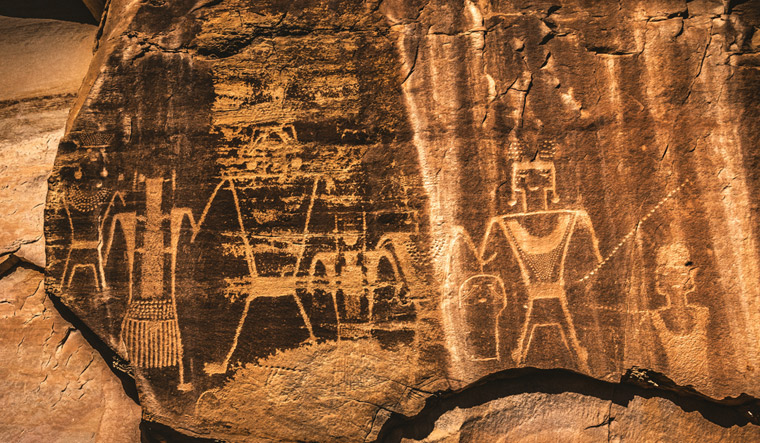Scientists have used "X-ray vision" to gain new insights about the layers of paint in rock art in Texas, US without causing needless damage.
Prehistoric rock paintings are a source of fascination across the world. There is deep meaning in these strokes, which depict ancient rituals and important symbols, said researchers from the Shumla Archaeological Research & Education Center in the US.
To learn more about these murals, researchers have historically resorted to sampling methods that are damaging to the artwork, contradicting the archaeological tenets of conservation.
"In this particular work, we used a technique called portable X-ray fluorescence spectroscopy (pXRF), in which a hand-held instrument can be carried to a site and used right there, on the spot," said Karen Steelman, who led the study.
"It gives you the elemental analysis of a specific material, and is the first step in figuring out how ancient artists used different materials to make their paintings," Steelman said.
The research focused on the analysis of rock and cave art, particularly in the Lower Pecos Canyonlands in Texas.
The researchers have previously analysed the composition of pigments at more than 10 sites in the region, but had been unable to see the bigger picture of how these pictographs were composed.
Other pigment analysis methods, such as inductively coupled plasma mass spectrometry, require a sample of the rock art in question, which results in damage to the site, and field microscopes are unable to detect layers of paint in a complex mural.
Steelman and her colleagues visited the Rattlesnake Canyon Site along the Rio Grande, known for its array of pictographs.
Using a 105-foot wide mural as their testing canvas, they used pXRF to measure 138 areas where the composition indicated overlapping pigments of red, black, white and yellow.
Measurements were taken at 90 locations of unpainted limestone, which provided insight into the makeup of the geological canvas.
Using the large amount of data collected from Rattlesnake Canyon, the team could determine a pattern to the layers of pigment, as well as their elemental makeup.
The pXRF measurements revealed previously unseen layers of black pigment under layers of red, which were made with manganese and iron oxide, respectively.
These complex layers of pigment indicated a level of sophistication seen in other Lower Pecos sites, which ethnographers have determined are a series of religious murals that revealed the complex nature of the hunter-gatherer society that occupied the region from 2500 BC to 500 AD.
Steelman, along with collaborators, also discovered that the site appeared to contain gunshot damage.
"Unfortunately, we often see suspected bullet impacts at rock art sites," Steelman said.
"Most of this is older types of vandalism from the early 1900s, and we used the portable X-ray to determine what trace elements were present," she said.


